BA • August 2019
Objects of our affection
Travel journalist Simon Calder on five items that define the last 100 years of British Airways – and the five we predict will encapsulate the next 100
The Speedbird logo (1932)
Every BA pilot flying internationally uses the callsign ‘Speedbird’ to identify their specific flight – starting with Speedbird One for the London City to New York JFK link. While some believe it is a reference to Concorde, the supersonic jet that BA operated from 1976 to 2003, in fact, the term originated in 1932 to describe not an aircraft but an emblem. Graphic designer Theyre Lee-Elliott was in his twenties when he devised the logo for use on promotional posters for Imperial Airways. The polygon was instantly inspirational, signalling the optimism and aspiration of flight, and it soon began to appear on aircraft.
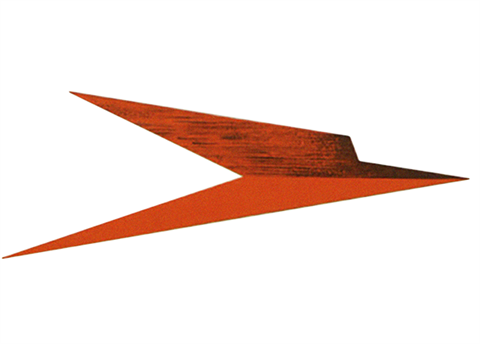
An audio stethoscope on an early Boeing 747 (1970s)
To the 21st-century passenger, the concept seems absurd: film screens pulled down by cabin crew at strategic locations in the 747, and passengers handed plastic stethoscopes. But at the time it was revolutionary. Transatlantic travellers gratefully plugged them into the pneumatic sound system in the armrest (next to the ashtray) and sat back to enjoy the latest Hollywood blockbuster.
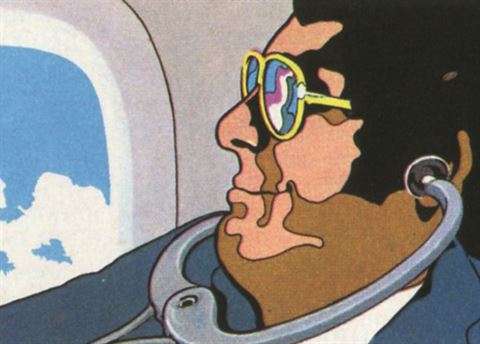
Concorde flight certificate (1983)
Before long-haul travel became affordable, extensive and comfortable, in-flight certificates were commonplace. Typically they were awarded for crossing the equator, which BA did on routes to South America, Africa and Australia. Concorde was different. This supersonic aircraft was so remarkable that any flight was worthy of a certificate signed by a pilot – provided he or she had time during the sub-four-hour flight between Heathrow and New York JFK. On the evening departure in winter, it was dark in the UK, but Concorde overtook the sun to land in daylight.
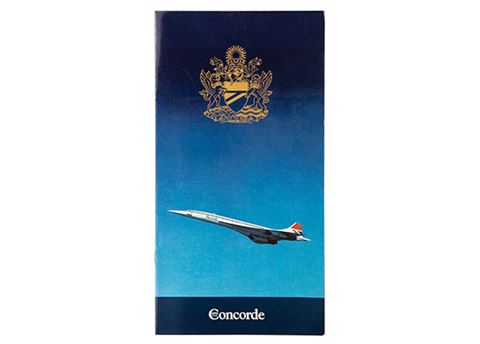
The Flower Duet (1989)
In the second half of the 19th century, Paris was in full voice, operatically speaking. Lakmé, by Léo Delibes, celebrated the Hindu goddess of wealth, with the most memorable tune being The Flower Duet, which is sung by Lakmé and her servant Mallika. The latter begins with the words ‘Sous le dôme épais’ (‘Under the leafy dome’). Unwittingly, Delibes had scored the soundtrack for a generation of BA commercials. A big-budget BA ad in 1989 used a version of the tune, and it has endured for three decades. To celebrate the airline’s centenary, the theme tune has been reworked by one of BA’s own – Engineer and BA orchestra violinist, Lyndon Ooi.
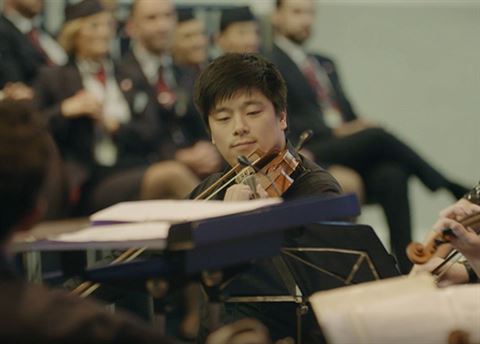
A380 flight-deck display (2013)
Many of the pilots flying BA’s fleet of Airbus A380 long-haul aircraft transferred from the short-haul fleet, and they find the bigger aircraft has many similarities, such as the joysticks and the thrust levers in the centre of the console. But the all-important instruments have transitioned from an analogue to a digital age. Thanks to the head-up display, the key parameters of airspeed, altitude, angle of attack and heading are deftly displayed on transparent screens that remove the requirement to glance back and forth between controls and cockpit window.
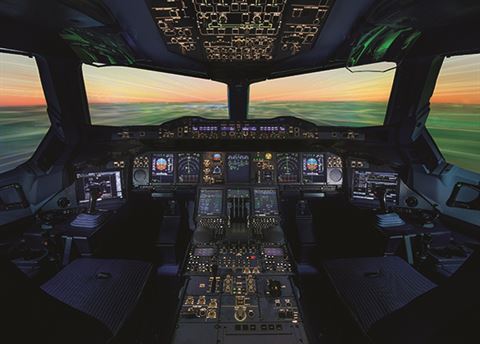
The Club Suite
By John O’Ceallaigh, the Telegraph group’s luxury travel editor
And now to the future. As part of a £6.5bn investment programme, BA’s new Club Suite launches this October on the first A350s flying to Toronto and Dubai and is already on board selected short-haul routes. Swish seats are the focal point of a super-spacious cabin. The forward-facing ‘suites’, so called because each incorporates a sliding door for unprecedented privacy, make for cosy cocoons for slumbering passengers, or enhanced spaces for work and leisure, with high-speed Wi-Fi and enlarged, upgraded entertainment systems.
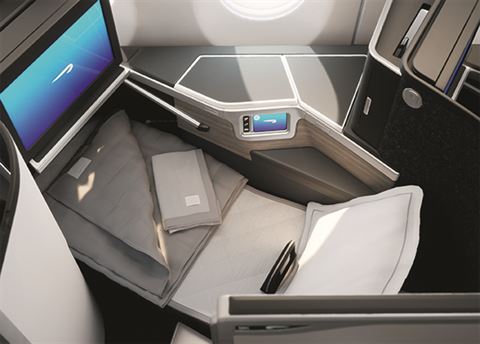
The digital compass
Since WWII, air navigation in Europe has largely involved flying along a specific path, with the heaviest traffic concentrated in London. In order to optimise airspace, BA is trialling a computer system that assesses real-time data to allow aircraft to fly direct tracks that are quicker and cleaner.
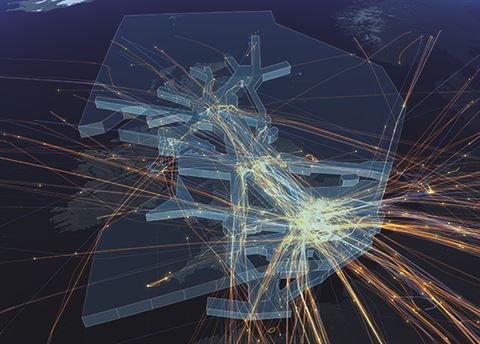
Flying Start pin badge
By the end of 2020, BA’s Flying Start programme aims to reach a fundraising target of more than £25m raised in support of Comic Relief. More than £2m of this money will be invested in projects that focus on early childhood development across the UK, as well as in India, Ghana and South Africa. This includes supporting Mothers 2 Mothers, which helps to prevent transmission of HIV from expectant mothers to their children. This badge is proudly worn by 5,500+ BA colleagues, who have helped to raise more than £22m since the partnership began in June 2010. The simple, purposeful design casts a fitting upward trajectory.
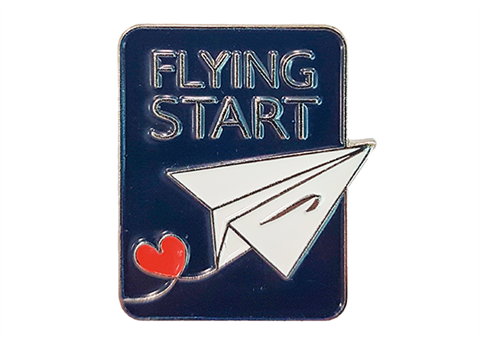
The startup hub – Hangar 51
This incubator for innovation was created by BA parent company IAG as a global accelerator to mentor startups. These are embedded with IAG for ten weeks to help develop and test their products. Examples include creating tech to improve aircraft turnarounds or to help reduce CO2 emissions.
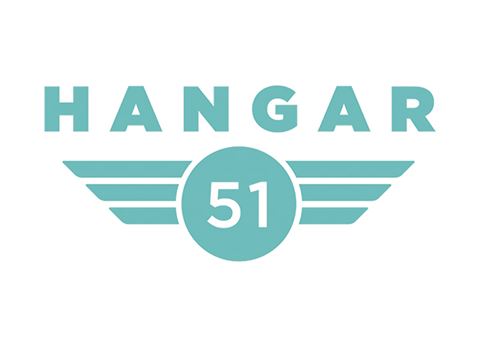
The driverless vehicle
Airports are ideally suited to using driverless technology. Heathrow already has the UK’s only autonomous passenger transport in regular use, in the shape of the pods that connect Terminal 5 with the business car park. And, after passport control, BA is trialling autonomous baggage trucks that are speeding up the delivery of bags.
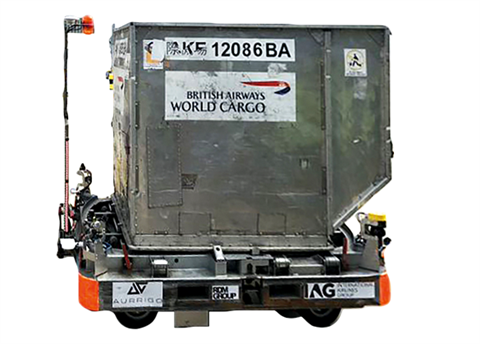
This article has been tagged BA, Technology
More from previous issues
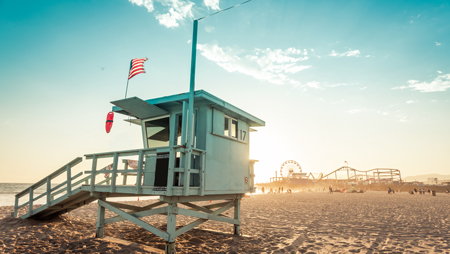
The world’s hottest beach cities right now
Looking for a city break this summer, but still yearning for the soft sand? We show you where to go to get the best of both worlds

The best of BA news
Two new seasonal routes take flight, High Life Shop's pre-order service lands at Heathrow, plus BA introduces biometric boarding on flights from the USA

Where to go in August
Euro stars: some cities on the Continent simply come alive as the sun rises. Here are five destinations to warm your heart this August

Exclusive Club offers
Win a private flying lesson courtesy of The Flight Store and Lonely Planet's latest coffee table tome, plus there are discounts at Europe's most exotic hotels and 20 per cent off car hire in Italy
